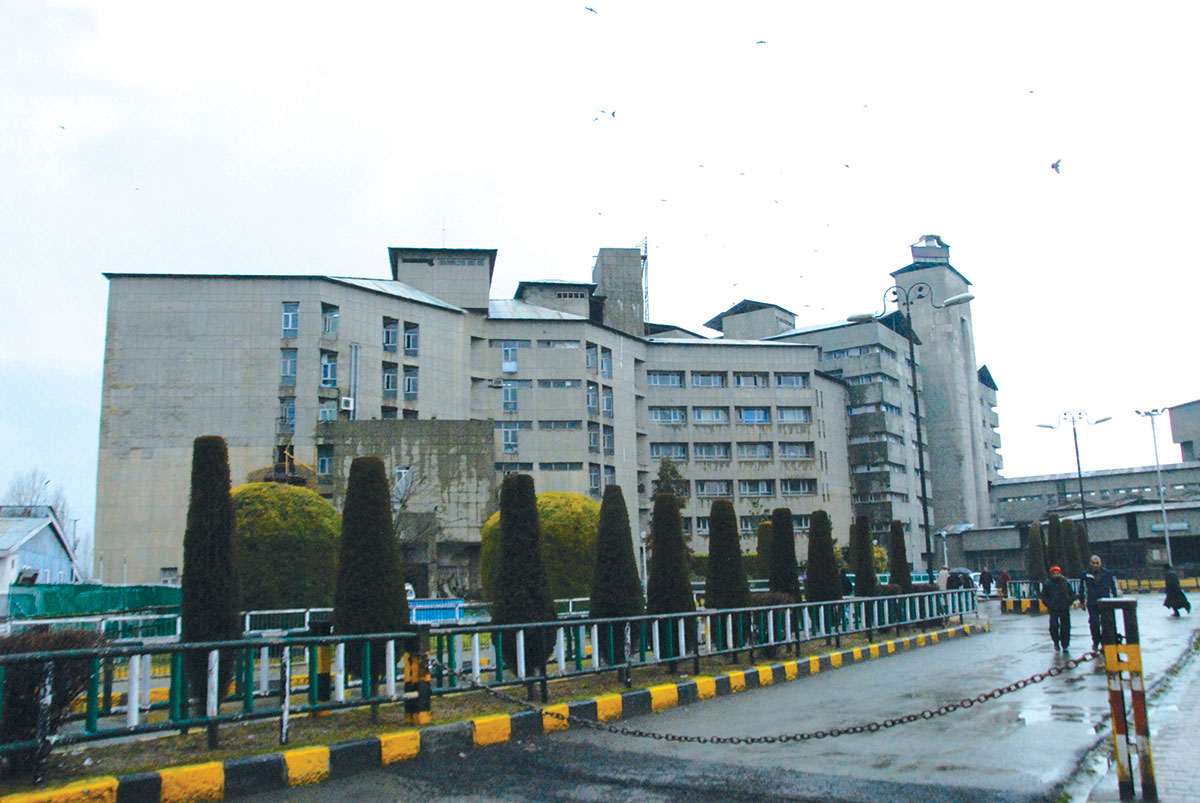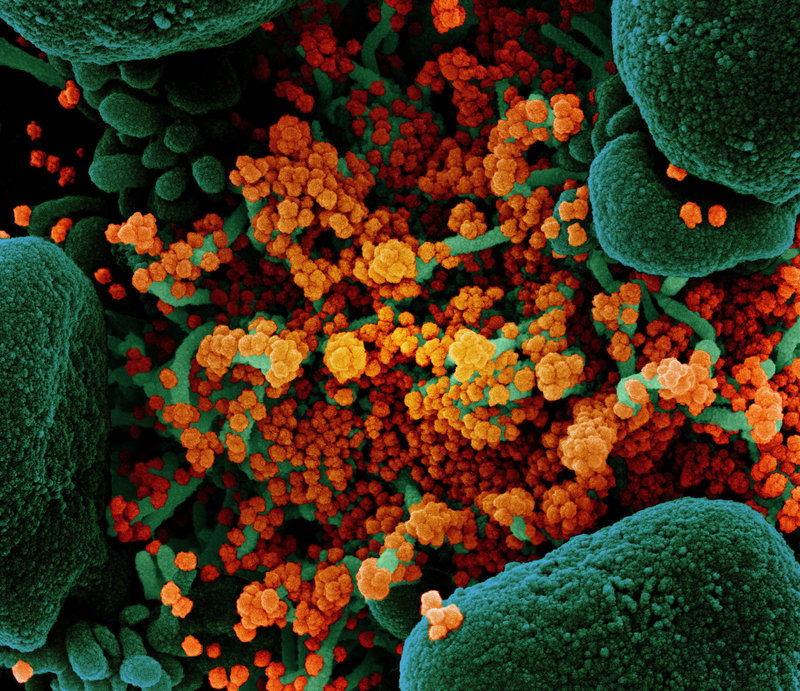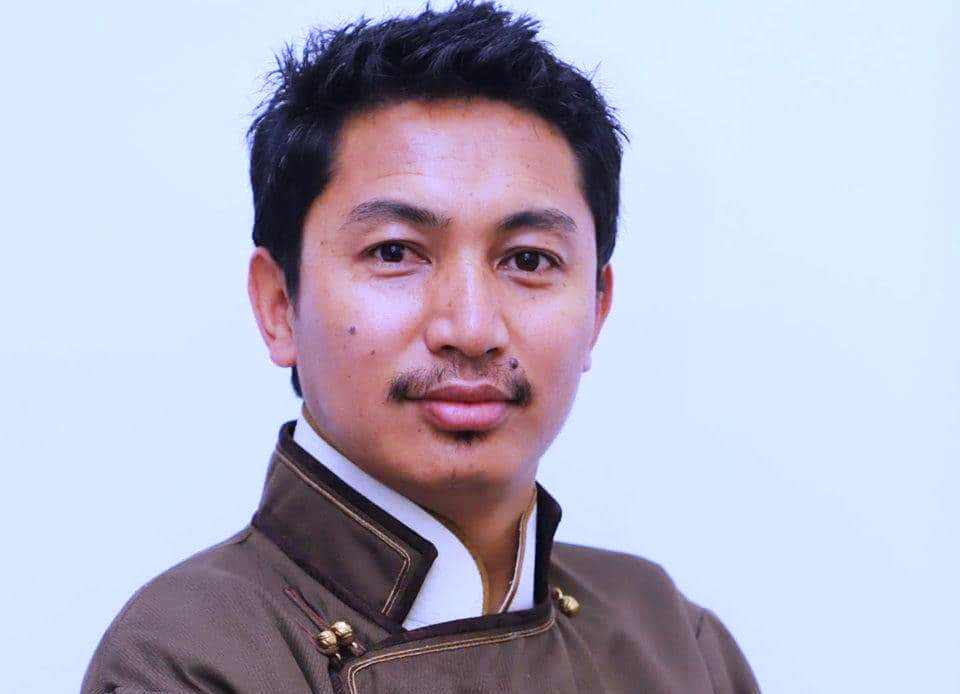Covid-19 scare jammed life and people started avoiding hospitals. What happened to cancer patients? Saima Bhat visited Kashmir’s major cancer treatment facilities to get an answer

December 2019, Tasaduq Hussain was making vacation plans for the next year. With family consultations, he finalised fortnight-long vacation. Subsequently, he booked flight tickets for the first week of January to multiple cities.
Before the family could take-off, Tasaduq complained of Hematuria, presence of blood in the urine. After several consultations and investigations, he was diagnosed to have malignant cells in a part of his urinary bladder.
Shattered, the plan changed and the new priority was to save a life. As advised by the doctors, he was immediately operated. Post-surgery, he was put on regular follow-ups for Intravesical chemotherapy (IC), for the next couple of months. As soon as his IC ended, he had to undergo mandatory testing again in March.
However, in between another crisis erupted. His repeated testing date collapsed with the onslaught of Covid-19. Caught between Covid and compulsory testing, Hussain was feeling restless. A banker by profession and resident of Srinagar’s uptown locality, he was having sleepless nights when district administration in Srinagar decided to impose a complete lockdown to control the contagion spread.
As life came to standstill, Hussain became sceptical of his survival. However, his green card (hospital prescription) helped him to move around freely amid restrictions.
Shuttling between the hospital, diagnostic laboratories and private clinics to analyse post-surgery status, he had to hear a piece of distressing news. “All my tests were clear but the CT showed one more spot where they (doctors) analysed that it could be a renewed growth. So every day my destination was SKIMS hospital to private clinics to know what it is, which was followed by tests,” said Hussain.

Not willing to take a chance, the doctors treating Hussain suggested undergoing another surgery for mass removal. This time it was a more difficult decision for the family than the previous one. “The Coronavirus had reshaped the world. When people were running away from the hospitals, I had to decide to go to one. It was like a double-edged sword,” the banker said. “If I didn’t go for the procedure, I could have died. And if I opt for it, Covid-19 would have killed me. But then after taking all the precautions, I decided to go for surgery for my lone daughter, who is just 10 years old.”
Finally, the second surgery was done in mid-April. However, Hussain was attended by his wife only. People were avoiding hospitals as they were converted into Covid care centres. Going outside Kashmir was not an option for the family.
Before the couple could meet their daughter, they had to go for mandatory quarantine for 14 days at home. The isolation led to further stress, but the quarantine days passed peacefully without any symptom.
Negative for the virus, the routine was resumed with new chemotherapies. Recalling those days, Tasaduq said, there was a good number of patients in the hospital. “The oncology outdoor patients department (OPD) at SKIMS always had a good number of patients waiting in the queue. I had to go on a weekly basis and every time I was in the hospital, I used to avoid any contact,” he said. “There was not an option to skip. We could not afford to miss our doses. It was a do or die like situation for us.”
Once done with the doses, the trauma to stay alone started again. “So after every dose, we used to stay in quarantine again till our next appointment,” he said.
Fighting for survival, it was after six months, Hussain and his wife could see their only daughter who was shifted to her grandparents’ house due to Covid-19 fear. “Trust me I desperate to hug my daughter and feel that I was alive but it became possible only after six months,” said Hussain.
Low Footfalls
At the Regional Cancer Centre (RCC) of SKIMS hospital, which has the highest number of registered cancer patients in Jammu and Kashmir, the official data suggest a lesser number of patients came to the department for their treatment during the last week of March and throughout April and May.

When Covid-19 care took over, overwhelmed, the hospitals had to put halt to the routine. Most of the OPDs at SKIMS hospitals became dysfunctional; however, the authorities said Oncology was the exception.
“We never stopped working. All cancer-related OPDs, radiation and chemotherapies were running normally. We had lab and imaging sections also working nonstop,” said Dr Fir Afroze, who heads SKIMS’s Radiation Oncology department. However, she accepted that initially, the patients were reluctant to come. “Yes, initially patients were reluctant to come to the hospital. These patients are immune-compromised so they are always at risk of getting infected. Their fear was genuine,” she added.
Cancer treatment is neither an emergency nor can it be delayed. It is essential, however. The experts believe the oncology surgeries were hugely affected with only those patients being operated who were at high risks.
High-Risk Surgeries
In March alone, the RCC registered at least 367 new patients and 3500 patients were on their follow-ups. But in April the number of patients was reduced and the doctors claim it was due to Covid-19 scare, otherwise, nobody stops any cancer patient on road. They said the scare remained there for initial months only, the patients started coming back from June. (Table 1)
| Month | New Patients | Follow-up |
| March | 367 | 3500 |
| April | 200 | 2355 |
| May | 230 | 2500 |
| June | 355 | 3500 |
| July | 310 | 3200 |
| August | 277 | 2800 |
| September | 327 | 3500 |
| October | 350 | 3500 |
(Table1: the figures of patients registered at RCC, SKIMS Soura)
Frightening that the Covid-19 infection may impact the staff, there was a suggestion that Covid-19 negative certificate should become a basis for treatment. Watch the rush at Covid-19 testing facilities, it was later made mandatory for those having strong symptoms.
“It was not possible for them to go for the test every day,” Afroze said. “Radiation or chemo session is an ongoing process, which takes weeks to complete. And after every session, the patient is sent home so the doctors, who take the patients’ details before every session used to ask them mandatory questions regarding their contacts or the symptoms.”

After taking all the precautions Dr Afroze said that around 10 to 12 patients from her department of radiation oncology tested positive who were later admitted in the hospital’s Covid-19 clinic for their treatments. After testing negative their treatment was started again with ‘gap correction’. She was happy to share that all of the patients from her department recovered well from the virus.
Virus Fear
Unmarried Shabnum, 29, a cancer patient registered with RCC had her chemo session due in early April. Owing to virus scare, she skipped the hospital for the treatment.
A resident of south Kashmir, Shabnum, said was under the impression that the entire SKIMS stands converted into a Covid-19 facility. It was after her treating doctors gave her details that she reluctantly decided to visit.
“It was not only that I was at risk but my parents, who accompany me to the hospital, were also at risk,” she said. “And then this is an ongoing treatment where a patient has to come to hospital regularly for a week or 10 days, till the session of doses completes.” She did not want to add another vulnerability to her aged parents.

Doctors in SKIMS believe there were hundreds of cancer patients who did not undergo treatment or tests or follow up screening as a direct consequence of the disruption due to Coronavirus in the initial three months. The doctors said the decreasing trend of registry of new patients at the RCC was worrisome.
Dr Nazir Ahmad Wani, Professor, Department of Radiation Oncology, SKIMS claimed that the referral of such patients by primary care physicians had reduced by over 70 per cent in April-May in many countries of the world. “At SKIMS, the referral, from districts and other private institutions, reduced by more than 80 per cent in April–May. But amongst the follow-up patients, more than 100 patients were receiving radiation therapy at SKIMS daily during the lockdown period,” he wrote in July.
Doctors knew that the footfalls will dramatically surge once the restrictions withdraw. This was despite Afroze’s department starting teleconsultations, during which the doctors would assess if their patients require visiting them. “It is our protocol in the routine as well that we call our patients. But this time we prescribed them medicines on phone as well.”
The SMHS Scene
So far, according to official figures, 1100 patients have died of Coronavirus in Kashmir. (Jammu and Kashmir figures is at 1676). In Kashmir, only 23 patients had cancer and tumour as their co-morbidity.
At the government associated hospital, SMHS, which mostly has registered cancer patients from Srinagar district, there was a sharp decline in the footfall of the patients. As the hospital was also turned into a Covid-19 centre, patients skipped the hospital.

A week later, Dr Sanaulla Kuchay, the Radiation oncology head said they decided to keep their department open for the cancer patients while taking all necessary precautions.
“When we started the department again in the first week of April, we had just 5 per cent of patients,” Kuchay said. “Then we got infrared thermometers, PPE kits, masks, sanitizers in the department. And after 4 O’clock there was a complete sanitisation of the department which I believe boosted the morale of staffers as well as the patients.”
Giving details, he said after April 17, his department got at least 50 per cent of the patient flow back but the OPD services and the ward services could not be restored as they involved more risks. By November 2020, the department admits critically ill patients only. (Table 2)
| Month | OPD Follow up | New patients | Chemotherapy | Radiotherapy |
| March | 673 | 71 | 180 | 686 |
| April | 514 | 29 | 150 | 689 |
| May | 563 | 19 | 187 | 599 |
| June | 914 | 59 | 249 | 613 |
| July | 853 | 44 | 240 | 709 |
| August | 773 | 45 | 239 | 601 |
| September | 870 | 78 | 255 | 761 |
| October | 868 | 69 | 270 | 975 |
(Table2: Patients registered in the Oncology department at SMHS hospital).
After taking all the necessary precautions, Dr Kuchay satisfyingly shared that none of his patients got Covid-19 up to October 2020, when 80 per cent of his department has restored working normally. However, three of his staffers got the infection. “They got it in their homes. I am glad that our department is Covid free,” he said.
Cancer Society
At Cancer Society of Kashmir, CSK, another major address for cancer patients in Kashmir, the resident doctor Dr Mareekha Ahmed is busy with her routine flow of patients. “Initially patients preferred not to come but then they sent their volunteers from each district or cluster of villages, to take the monthly stock of medicines. They showed us the ID’s of patients and after verifying we gave them medicines.”

But the chemotherapy could not be given at homes so the patients getting their doses from CSK were regular. “Cancer patients are not stopped anywhere and they manage to reach hospitals. None of our patients missed any dose. Our monthly expenditure remained the same throughout, despite Covid-19 scare,” said Dr Mareekha. She also added, some of their patient who had fever or cough was referred to SMHS hospital directly and not given any treatment till recovered.
New Load
The Covid had another implication. Almost five per cent of cancer patients used to go outside Jammu and Kashmir for treatments. Lockdown froze their movement. So this load was added to the SMHS-SKIMS combine.
“We have a liaison with many cancer centres across India and when they came to know we have the latest equipment at SMHS hospital, they informed their Kashmiri patients and suggest them to go to SMHS,” said Dr Kuchay. “These patients used to spend lakhs on their treatment in Delhi but this time they got the same treatment free of cost.”
Material Help
Cancer is a wealthier disease that requires a king’s cost. With almost all economic activity frozen, the situation impacted the families. Taking note of this situation, the SMHS oncology department started their in-department grant in aid for cancer patients.
“So far we have spent almost 49.90 lakhs on our patients other than the last CM’s scheme-Cancer treatment fund management for poor patients, which gives a maximum of Rs 50,000 per patient depending on their treatment cost and it became a big relief for these patients,” said Dr Kuchay.
No Help
In April Sajad Ahmad, 55, started having cough. Initially, considered to be a routine matter, his family and friends grew suspicious later of him being Covid positive. After put to test, he came out as negative. Confident, he went to treat the ailment. After some mandatory tests, his lungs showed an accumulation of fluid.
“Nowadays it seems quite normal going to hospitals. But those days going to any government hospital, which was mostly turned into Covid-19 centres used to give goose-bumps. It was no different from going to the death angel yourself. So I decided I will go to a private clinic,” said Ahmad.
But Ahmad had no idea what is in store. As he consulted a doctor and did required tests, he was advised biopsy. However, the unavailability of such services turned him anxious and he started having panic attacks.
“Believe me it was not like a nightmare for me only to get my biopsy done, it was same for my doctor,” Ahmad said. “No private lab was available for such tests. Going to SKIMS or SMHS was nowhere an option for me. The thought of having malignancy in my lungs was giving me a tough time. I could have moved out but due to clampdown that too seemed impossible.”
His condition started deteriorating, with increasing anxiety. Finally, the treating doctor requested his colleague, a radiologist if he could get some fluid out from his lungs in a syringe for the biopsy test.
As his finding after a week came clear, there was no serious ailment. But as of now, Ahmad continues to have panic attacks, a crisis which is taking a toll on his health and family.
(All names of the patients have been changed to protect their identity.)















